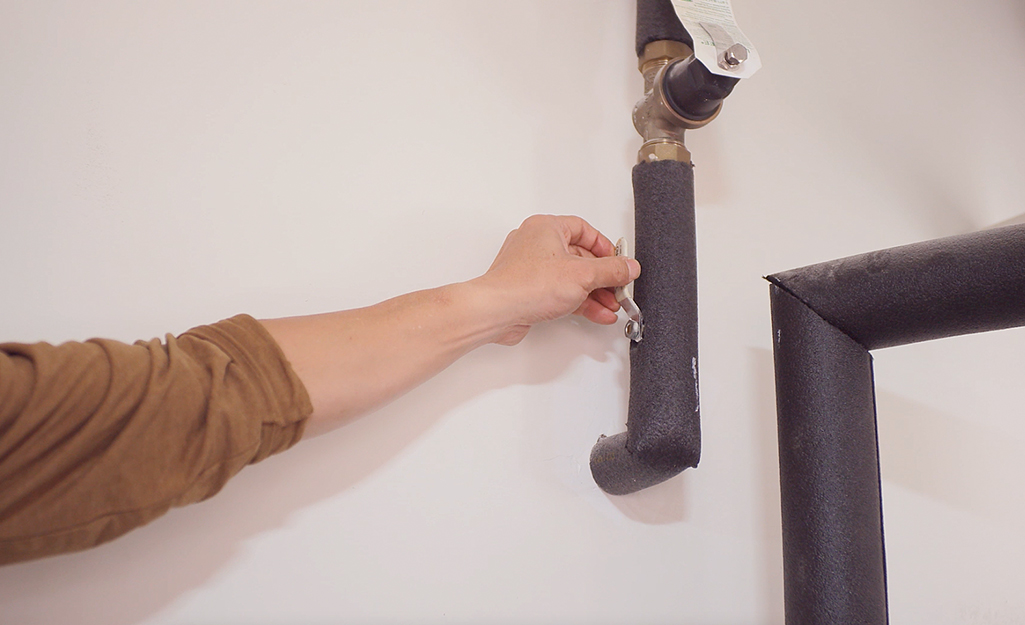They are making a number of good points relating to How to Fix a Dripping or Leaky Faucet overall in this post on the next paragraphs.

Dripping faucets may appear like a small inconvenience, but their effect exceeds simply the aggravation of the audio. From drainage to sustaining unneeded economic prices and wellness threats, neglecting a leaking faucet can result in numerous repercussions. In this post, we'll explore why it's essential to address this usual family problem quickly and effectively.
Wastefulness of Water
Environmental Influence
Leaking faucets contribute dramatically to water waste. According to the Epa (EPA), a single faucet trickling at one drip per second can squander more than 3,000 gallons of water annually. This not only stress water resources however also influences communities and wild animals based on them.
Step-by-Step Overview to Repairing a Dripping Faucet
Devices Called for
Before trying to take care of a trickling tap, collect the necessary devices, consisting of an adjustable wrench, screwdrivers, substitute components (such as washing machines or cartridges), and plumber's tape.
Common Faucet Issues and Their Solutions
Determine the sort of faucet and the particular issue causing the drip. Typical troubles consist of worn-out washing machines, rusty valve seats, or malfunctioning O-rings. Describe manufacturer instructions or on the internet tutorials for detailed advice on repairs.
Financial Costs
Increased Water Bills
Beyond the environmental impact, dripping taps can blow up water costs considerably. The collected waste in time equates right into higher utility expenditures, which can have been prevented with timely repairs.
Possible Residential Or Commercial Property Damage
In addition, extended dripping can cause damage to components and surfaces bordering the faucet. Water buildup can cause discoloration, corrosion, and even architectural problems if left neglected, resulting in extra repair expenses.
Wellness Issues
Mold And Mildew and Mildew Growth
The consistent presence of wetness from a leaking tap creates an optimal setting for mold and mildew and mold growth. These fungi not only jeopardize interior air top quality but also position health and wellness risks, specifically for people with respiratory system problems or allergic reactions.
Waterborne Illness
Stagnant water in leaking faucets can end up being a breeding place for germs and various other microorganisms, boosting the danger of waterborne illness. Pollutants such as Legionella germs flourish in stagnant water, possibly bring about serious ailments when consumed or inhaled.
DIY vs. Specialist Repair service
Benefits and drawbacks of DIY Repair
While some might attempt to deal with a leaking tap themselves, DIY repairs include their own collection of difficulties. Without correct understanding and devices, DIY efforts can aggravate the problem or bring about incomplete repair services, lengthening the problem.
Advantages of Working With an Expert Plumber
Working with a professional plumber guarantees that the underlying root cause of the trickling tap is addressed efficiently. Plumbings possess the experience and equipment to diagnose and repair faucet problems efficiently, saving time and reducing the danger of additional damages.
Ecological Obligation
Private Contribution to Conservation
Taking obligation for repairing dripping faucets aligns with broader initiatives towards water conservation and environmental sustainability. Every individual's actions jointly make a substantial influence on protecting precious sources.
Lasting Living Practices
By prioritizing punctual fixings and embracing water-saving habits, people contribute to lasting living methods that benefit both existing and future generations.
Preventive Measures
Regular Upkeep Tips
To prevent leaking faucets, execute routine upkeep such as cleaning up aerators, evaluating for leaks, and changing worn-out parts without delay. Furthermore, take into consideration installing water-saving gadgets or updating to much more reliable components.
Significance of Prompt Fixes
Addressing dripping faucets as quickly as they're seen prevents additional water wastage and possible damage, inevitably conserving both water and cash in the long run.
Impact on Building Worth
Perception of Well-Maintained Building
Keeping a residential or commercial property in good condition, including addressing maintenance concerns like trickling faucets, enhances its perceived worth and charm among potential customers or occupants.
Influence on Resale Value
Properties with properly maintained plumbing fixtures, consisting of faucets, command greater resale values in the property market. Attending to dripping taps can contribute to a favorable impression throughout home inspections and settlements.
Conclusion
Attending to a dripping faucet surpasses mere benefit; it's an important action towards conserving water, minimizing economic costs, and securing wellness and residential or commercial property. Whether with do it yourself fixings or professional assistance, acting to take care of trickling taps is a tiny yet impactful means to advertise responsible stewardship of resources and contribute to a healthier, much more sustainable future.
How to Fix a Dripping or Leaky Faucet
A leaking faucet is one of the most common problems that homeowners encounter, but it being commonplace doesn’t make it any less annoying. The constant drip drip drip of a leaking bathtub faucet, showerhead, or sink tap can disturb your home’s serenity. Left neglected, a dripping faucet can also result in higher water bills and discoloration or mold growth in your sink or plumbing fixtures.
Fortunately, you don’t have to be a trained plumber to know how to stop a dripping faucet. With some basic tools, replacement parts, and a little patience, leaky faucet repair is a breeze. In this article, we’ll explain what causes dripping faucets and how you can fix them.
What Causes a Leaking Faucet?
Kitchen and bathroom faucets come in all manner of designs, but most involve some combination of valves, O-rings, seals, and washers. The O-ring is usually the weakest link, but any one of these pieces can wear down over time. Heat, moisture, temperature fluctuations, minerals, mold, and movement can contribute to warping and corrosion, breaking the watertight seal. This just comes with the territory of being a homeowner. Everything is always subject to wear and tear, and some component parts of your appliances and fixtures need to be replaced on occasion. At least replacement O-rings are cheap!
More rarely, dripping faucets can be a symptom of excessively high water pressure. Were this the case in your home, you would probably notice that the leak is not isolated to one faucet. Water pressure issues are harder to resolve on your own. We recommend contacting a professional plumber if you suspect your water pressure is too high.
How to Fix a Dripping Faucet
Pipe wrench or monkey wrench Allen wrench set Screwdrivers Old towel or rag Shut off the water.
Before you do anything, you need to turn off the water to keep from drenching your kitchen or bathroom. You should find a valve under the sink and against the wall. Once you’ve turned this valve, try turning the faucet on to confirm that the water source has been cut off.
If you can’t locate your local valve for the faucet you’re working on, you can always shut off the water to the house at the main valve. Of course, this will prohibit anyone from using the sinks, showers, or toilets while you’re working on the faucet that’s giving you trouble.
Plug or block the drain.
You’ll be disassembling the faucet and removing some small bits of hardware. Plug the drain with a stopper or rag to avoid the possibility of a small screw falling into your P-trap.
Take apart the faucet assembly.
There are several varieties of kitchen and bathroom faucets, each with its own manner of assembly. For detailed instructions on how to disassemble your faucet, you can refer to the fixture’s manual or contact the manufacturer. If you know whether you have a ball, disc, cartridge, or compression faucet, you can find detailed schematics online.
In general, you need to begin by removing the faucet handles. You might notice a small screw that you’ll need to remove with a screwdriver or Allen wrench. If you don’t see any visible securing hardware, it’s likely hidden under a decorative cap that can be unscrewed or popped off with flathead screwdriver.
Remove each piece methodically, consulting a schematic when necessary. Take notes or arrange the pieces in such a way to make it easier to correctly reassemble the faucet later.
Remove the cartridge.
Once you’ve removed the handles and securing hardware, you should be able to remove the valve cartridge or stem. Some cartridges will slide right out. Other faucet models will require you to loosen a nut with a pipe wrench before you can remove the valve stem.
Examine the exposed hardware.
With the cartridge or stem removed, inspect the component parts. Check the rubber O-rings for wear and tear. Also examine the seat washer for corrosion or other damage. These pieces are usually the responsible parties for a dripping faucet, but it’s worth inspecting the other component parts while you have the faucet disassembled.
Find replacement parts.
Once you’ve identified which faucet component has failed, find an identical replacement. Your local hardware store should have O-rings, seat washers, and other standard components in stock. If you have a luxury or uncommon faucet, you may have to contact the manufacturer for a replacement part.
It’s a good idea to take your old parts with you to the hardware store so you can compare them with the store’s inventory and be sure you’re purchasing the correct replacement.
Reassemble the faucet.
With your new parts in hand, reconstruct the faucet and handles. Don’t be tempted to overtighten screws or nuts. You might think this could create a better seal, but it can instead damage or bend a delicate part of the assembly and create a new problem for you.
Turn on the water and test the faucet.
The only thing left to do is test your work. Unplug the sink, turn the water back on, and try the faucet. Congratulate yourself on a job well done!
https://www.libertyhomeguard.com/how-to-fix-a-dripping-or-leaky-faucet/

As a passionate reader on Why Are My Faucets Dripping (And Can I Fix It Myself)?, I thought sharing that blog post was worthwhile. For those who enjoyed our article plz do not forget to pass it around. I appreciate your readership.